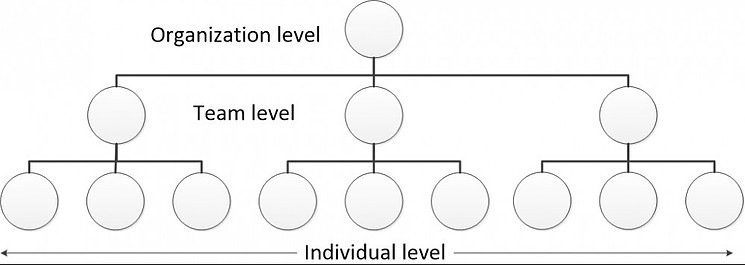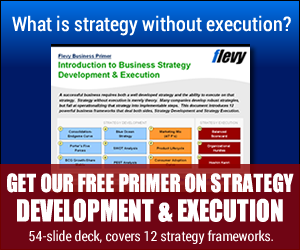Tracking results makes sense on any project, or any endeavor. There are many frameworks that can help you track results – and people have been tracking results long before the existence of these frameworks!
So why would you need a tracking framework, what makes one special or unique over another, and how would you go about choosing one and implementing it?
These are the immediate questions that come to mind as I learn and think about tracking frameworks. This post covers one – Objectives and Key Results (OKR). I intend to cover others, and have already written about one – Balanced Scorecards.
The OKR framework definitely has some history and traction. Andy Grove, former Chairman, CEO, and the third employee at Intel, is credited with inventing it. It gained unstoppable traction with its implementation at Google, where it became deeply embedded it the culture of the organization. It has since served other major tech and non-tech companies very well over the years.
Let’s explore the nuts and bolts of the Objectives and Key Results (OKR) framework and OKR best practices.
What Is the Objectives and Key Results Framework?
The OKR framework is all about setting objectives and achieving them. The framework starts with an Objective, derives some measurable Key Results relating to the Objective, and then sets up Initiatives – like projects or tasks – to achieve them.

Here is a little detail on each of these elements:
- Objectives – statement of a goal – inspiring and strategically driven – to be achieved
- Key Results – specific measures – aligned with progress steps – of achievement for an Objective
- Initiatives – actions – tasks and/or projects that will help you to achieve the Key Results
John Doerr, a former salesman at Intel who was first introduced to the OKR concept (at the time it was called Intel Management By Objectives (iMBO)) later published a book about the OKR framework entitled “Measure What Matters” in 2017. In 1999, Doerr, who later worked for venture capital firm Kleiner Perkins, introduced the idea of OKRs to Google, where OKRs became central to Google’s culture as a “management methodology that helps to ensure that the company focuses efforts on the same important issues throughout the organization”.
OKR Best Practices
Objectives, Key Results, and initiatives can be at any level – organization, team, or personal. As a result, any organization, team, or person can effectively use the OKR framework to set Objectives and associated Key Result metrics.
The focus here is on using the framework across the entire organization to achieve alignment of objectives across all individuals and teams within the organization. The graphic below is a starting point to show how that could work.

Start out by setting 3 to 5 broad, strategic objectives at the Organization level. Teams can then take those broader organizational objectives and set 3 to 5 tactical objectives in their area that align with and support those broader objectives. Individuals can then set their own objectives in alignment with the organizational and team objectives above.
Whether the objectives come from above or below in the organization is less important than that they are aligned. It is great if you can achieve a balance of bottom up and top down flow of initial objectives to facilitate buy-in at all levels.
In summary, here are five best practices:
- Keep Objectives simple – Objectives should be easy for everyone to understand, memorize, and internalize.
- Make short timelines – Objectives should be achievable over short durations. A good target is 3 months.
- Limit to 3 to 5 objectives – At each level and node in the hierarchy above, limit the objectives to maintain focus.
- Make OKRs challenging – Challenging Objectives and Key Results, even if not always achieved, lead to better results.
- Make Key Results explicit – Key Results must have clear metrics, leaving no question about success or failure.
The initiatives that grow from the Objectives and Key Results may be actions, tasks, or even projects. For example, an initiative could be a policy change, with a specific Objective and Key Results to be achieved. Alternatively, it could be a short duration project, or even the achievement of a milestone within a project.
An agile approach works best for OKR Best Practices because it flexibly supports near term goals, evaluation of results, and course corrections when necessary.
Support for failure is important. Targeting a 70% success rate is usually reasonable, as it tolerates or even encourages failure as a cultural value. This has to be consistent and a commitment; employees cannot be penalized for failures on OKR’s with pay and promotion impacts, which should be kept separate.
Circling back to the hierarchy diagram above, Objectives up, down, and across the organization need to be aligned and link back to strategy – a common theme throughout this blog.
Objectives and Key Results Examples
The OKR framework is flexible and can be used in large and small organizations, and can even be used by individuals for personal goals.
Here is a simple example of an OKR stream at the Organization, Team, and Individual levels, as depicted visually in the chart above in this article. They are aligned to ensure that all are supporting the same overall objective.
Organization
Objective: Create a continuous recruiting pipeline of quality candidates.
- Key Result #1: Identify a minimum of 20 Java programmer candidates weekly.
- Key Result #2: Pre-screen candidates to identify at least 5 viable Java programmer candidates weekly.
- Key Result #3: Hire an average of 2 upper mid-level Java programmers monthly.
Team
Objective: Hire Java programmer candidates to support project needs.
- Key Result #1: Add one new Java programmer to team every 2 months.
- Key Result #2: Develop an initial pre-screen test for candidates and meet with team to discuss enhancements monthly.
- Key Result #3: Organize team of three Java programmer interviewers to screen candidates and collaborate monthly.
Personal
Objectives: Screen candidates to hire Java programmers.
- Key Result #1: Developer interview checklist and review monthly for enhancements with other interviewers.
- Key Result #2: Review and rate 5 pre-screens per week in collaboration with other interviewers.
- Key Result #3: Interview up to 2 candidates per week and rate collaboratively with interview team.
The high level objective of creating a recruiting pipeline is broken down into more refined objectives at the team and Individual levels, and Key Results that are inspiring and challenging but achievable and created at every level. 100% success may not be achieved, but having specific metrics for Key Results drives overall achievement and produces an upward trajectory.
Objectives and Key Results Template
The foundation for a good OKR template is in the example shown in the last section. It needs to provide placeholders for the high level Objectives and several specific and measurable Key Results at each level. The levels in the Organization will vary and all depend on the situation. In the example above, I used generic Organization, Team, and Personal levels.
—————————————-
I recommend these PM templates (paid link):
—————————————-
The great thing about OKRs is that they offer a flexible framework that can be used at any level. If you are in a situation where your organization has a formal OKR initiative, then there will be OKRs at the Organization level. If not, then you will need to derive higher level OKRs from formal strategy, statements of objectives, or presumed strategic drivers related to your project. From there you can derive the OKR’s at the team or Project level, and ask team members to develop personal OKR’s that are aligned.
Project management templates provide a good starting point. My personal favorite for years has been the Method123 templates, or the corresponding MPMM project system software for guiding you through the steps of developing the project plan. In either case, you clearly define the Objectives for the project within the template, and you simply need to add several specific and measurable Key Results in your planning document.
OKR Alternatives and a Way Ahead
Using Objectives and Key Results and employing OKR best practices has been proven at many companies, starting with Google. It is highly flexible, adaptable to any size of organization, and targeted plain and simply to get results.
Other frameworks have gotten mixed results. For example, Management By Objective (MBO) seems to have fallen short of achieving practical results; it fell short on translating objective into measurable outputs. Key Performance Indicators (KPI) are another viable tool but may lack the tie back to objectives and strategy.
The OKR framework itself will not guarantee success and is dependent upon having good objectives that link back to strategy. The challenge is to have a strong vision as well as excellent implementation capabilities in the organization, and if you do, the OKR framework is a great tool. But again, it is only as good as the strategic vision that drives it.
A great way ahead for organizations of all sizes is to socialize the OKR framework for awareness, and to encourage people to try it in their areas. It can help achieve objectives at any level, and can later be expanded and formalized with best practices for synchronization up and down the organization.
—————————————-
I recommend these strategy resources (paid link):
—————————————-

